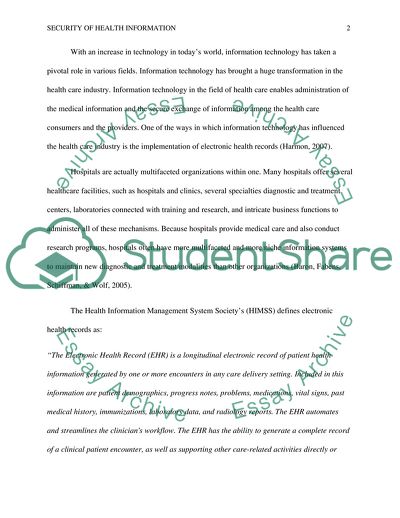Cite this document
(Security of Health Information Report Example | Topics and Well Written Essays - 1500 words, n.d.)
Security of Health Information Report Example | Topics and Well Written Essays - 1500 words. https://studentshare.org/information-technology/1736805-security-of-health-information
Security of Health Information Report Example | Topics and Well Written Essays - 1500 words. https://studentshare.org/information-technology/1736805-security-of-health-information
(Security of Health Information Report Example | Topics and Well Written Essays - 1500 Words)
Security of Health Information Report Example | Topics and Well Written Essays - 1500 Words. https://studentshare.org/information-technology/1736805-security-of-health-information.
Security of Health Information Report Example | Topics and Well Written Essays - 1500 Words. https://studentshare.org/information-technology/1736805-security-of-health-information.
“Security of Health Information Report Example | Topics and Well Written Essays - 1500 Words”. https://studentshare.org/information-technology/1736805-security-of-health-information.


